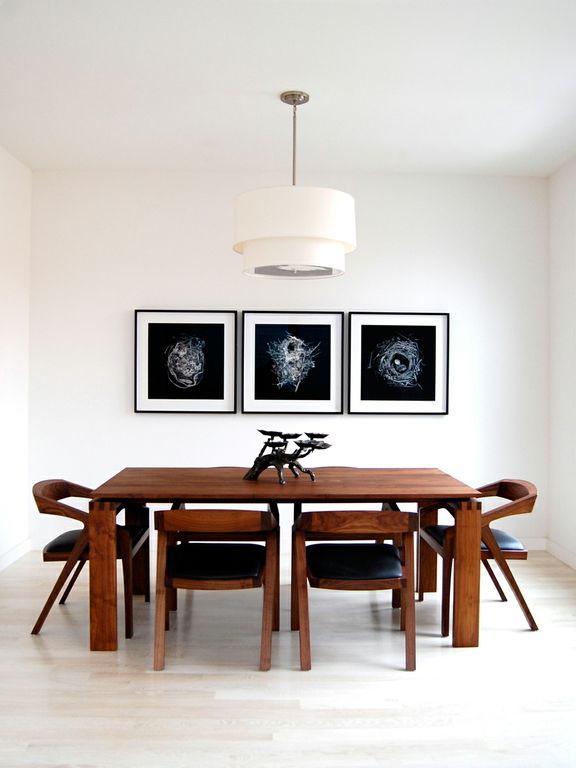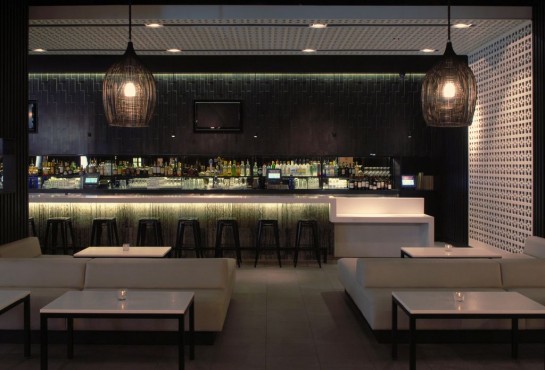 …………………………
…………………………
I’ve heard it said that designing successful minimalist space takes more effort than any other stylistic genre. When structure and surface elements stand alone, they must be carefully chosen, and artfully arranged by someone who understands them intimately. There are a few dozen architects and interior designers who do it masterfully. A few weeks ago I was introduced to the work of Michael Kao of MAK Studio, who is most certainly among their ranks.
This past Saturday morning I caught up with Kao by phone. He explained that he opened his firm after graduating from UC Berkeley with a Masters in Architecture. They offer full service design, including architecture, interiors, and landscaping that emphasize creating spaces that are quiet and understated with a sense of timeless elegance.
.
After carefully reviewing his firms website, I had some questions for him. He was gracious with his time, and shared some insight into his work.
 Photo of a recently completed house in Hillsborough, California
Photo of a recently completed house in Hillsborough, California
…………………………
How early in life did you realize you had an interest in design and architecture?
.
I would say I have always been in love with beauty and what it evokes for me. It truly has been at the core of who I am as far back as I can remember. Design and architecture are different forms by which I express that love. I jokingly tell friends and family that “my vocation is not a choice.”
I grew up in a very traditional Chinese immigrant family who unfortunately did not share nor really support that passion. My father had a successful career as a nuclear engineer and wanted very much for his only son to follow that path. I remember as a young boy imagining and drawing house plans which I had to hide in my room from him. My undergraduate degree was actually in biochemistry. Much to my parent’s dismay, I officially started to pursue an architecture career in graduate school. It was not until I was asked to teach design studios at UC Berkeley’s architecture program as well as winning some national and later international design competitions that they stopped trying to persuade me to go back for to school for an engineering or medical degree.
.
Does Chinese culture influence your work?
.
It does not in an aesthetic sense but definitely in terms of work ethics. I find my inspiration in the everyday, everywhere, and most of the time, in the unexpected. My usual work days are 7am-8pm. When I take a holiday, my friends jokingly remind me that it’s called a “weekend.” It sounds stereotypically Asian, but growing up with such hard working parents who demonstrated what can be accomplished through perseverance, I find it difficult to not be fully committed to my work. I am also incredibly lucky to be able to do what I love and to have clients who trust and support my vision.
.
Your work could be classified as Minimalist, would you say that’s an accurate moniker?
.
I don’t really subscribe to any classification. My interest in design has always been about looking at, studying, and making one aware of relationships between things: between light and shadow, between textures and shapes, and between the body and space. Architecture is a tool by which I can heighten one’s perception of those relationships. I find that the process is most successful when highly and carefully edited – and perhaps that is why some might think of my work as minimal.
.
Can you explain your design process? How do you conceive of a building?
.
The design process for me is about researching and understanding the issues and limitations imposed on the project and making them into opportunities rather than disadvantages. When I design, I am always asking myself what is the most understated and elegant way to express the answer to the problem. I also find that listening and listening well to my clients will always guide the project in the most successful way.
.
You also design interiors. Is it easy for you to switch gears between structural considerations and decoration?
.
I don’t think of interior design as decoration. I think at its best, interior design is the natural extension of the architecture. This is the reason we started to do interiors. We wanted to ensure a clear and harmonious dialogue between the building and what is in it. What’s wonderful for me is to be able to consider both at the time of designing and explore ways in which the architecture can highlight the furnishing of space and vice-versa. I also love creating moments to celebrate art within the building. Having charge of the interior allow us to thoughtfully create moments to visually frame the client’s collection through the design of the building.
.
You’ve taken both residential and commercial commissions. Do you have a preference?
.
I do not. They both offer fantastic opportunities for exploration.
.
What are a few of the materials or finishes that you’re most favoring currently?
.
We love to explore materials since we tend to highly edit our work. The essence of the few materials chosen at the end have to be just right.
Currently, we are working with craftsmen to create our own wood veneer. I find rift cut to be too rigid, too stark, too unnatural. Plane cut can appear too busy with the large cathedrals in the grain. We are weaving the two together to create an understated veneer for our casework that feels like it just have the perfect amount of movement.
We are also exploring different techniques for finishing. I love the look and color of fumed woods. Lately we have been working with the Japanese process of shou-sugi-ban, the charring of wood. We have been experimenting with hard and soft grain woods. The results have proven to be very beautiful: a deep black with a subtle silver sheen. The soft grains burn away highlighting the hard grains for a very expressive texture. I think the finish has a lot of potential.
…………………………
.
 A recently completed bar/lounge
A recently completed bar/lounge
…………………………
A warm thanks to Michael for sharing an understanding of his aesthetic. I was tempted to attach more pictures of his work in this post, but decided to encourage you to visit his website. It’s quite a visual treat for design enthusiasts.
…………………………
 MAK Studio
MAK Studio
1663 Mission Street Suite 501 San Francisco, California 94103 416-861-5646

Related
 Photo of a recently completed house in Hillsborough, California
Photo of a recently completed house in Hillsborough, California A recently completed bar/lounge
A recently completed bar/lounge

